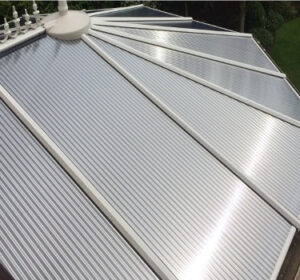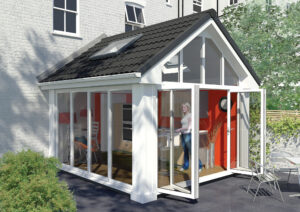- 4 February 2025|
- Conservatories
Upgrading your conservatory roof can feel like a significant decision, but when timed right, it offers benefits such as improved efficiency that make your conservatory usable all year. Over time, even the best-built roofs show wear, affecting comfort and value. How do you know when it’s time to act? Use the guide below to decide when to upgrade, review replacement options, and see the key advantages.
Spotting the Signs of an Outdated Roof
Temperature Troubles
Does your conservatory become a sweltering greenhouse in summer and an icebox in winter? Large temperature swings point to poor insulation, a clear sign your roof is past its prime.
Visible Wear and Tear
Cracks, discolouration and leaks signal deterioration. Watch for mould, water stains or damp patches after rain. These issues hurt comfort and can lead to structural damage.
Sky-High Energy Bills

Many older roofs—especially polycarbonate—lose heat quickly in colder months. If your heating bills keep rising and the conservatory is the culprit, a more energy-efficient roof could cut costs.
Benefits of Upgrading Your Conservatory Roof

Upgrading your conservatory roof makes the space more comfortable and efficient. Below are the main benefits and how they improve daily living and property value.
Enhanced Energy Efficiency
Traditional polycarbonate or old glass roofs struggle to retain heat in winter and block excess warmth in summer. Modern lightweight tiled roofs or double-glazed glass provide far better insulation, creating a consistent temperature and lowering energy bills.
Improved Aesthetic Appeal and Value
A new roof transforms the look of your home. A sleek glass roof or a tiled design that matches existing architecture boosts kerb appeal and can raise property value.
Exploring Your Replacement Options

Each roof type brings different advantages. Choose based on your needs, budget and preferred style. The most popular options are outlined below.
Solid Roofs: Pros and Cons
Solid roofs use insulated panels with tiles or slate for excellent thermal efficiency and a cohesive look.
Pros:
- Superior insulation keeps the conservatory warm in winter and cool in summer.
- Traditional appearance blends with existing architecture.
- Better soundproofing reduces rain and wind noise.
Cons:
- Higher cost due to materials and installation.
- Less natural light than glass; skylights can offset this.
Glass Roofs vs Tiled Roofs
Glass roofs maximise light for an airy feel, while tiled roofs focus on insulation and a uniform exterior.
Glass Roofs:
- Flood the space with natural light.
- Modern double-glazed units offer good insulation.
- Options for UV protection and self-cleaning coatings.
Tiled Roofs:
- Excellent insulation maintains steady temperatures.
- Matches a standard roof, enhancing kerb appeal.
- Available in many colours and finishes.
Hybrid designs combine glass panels with solid sections, giving you the light of glass and the insulation of tiles.